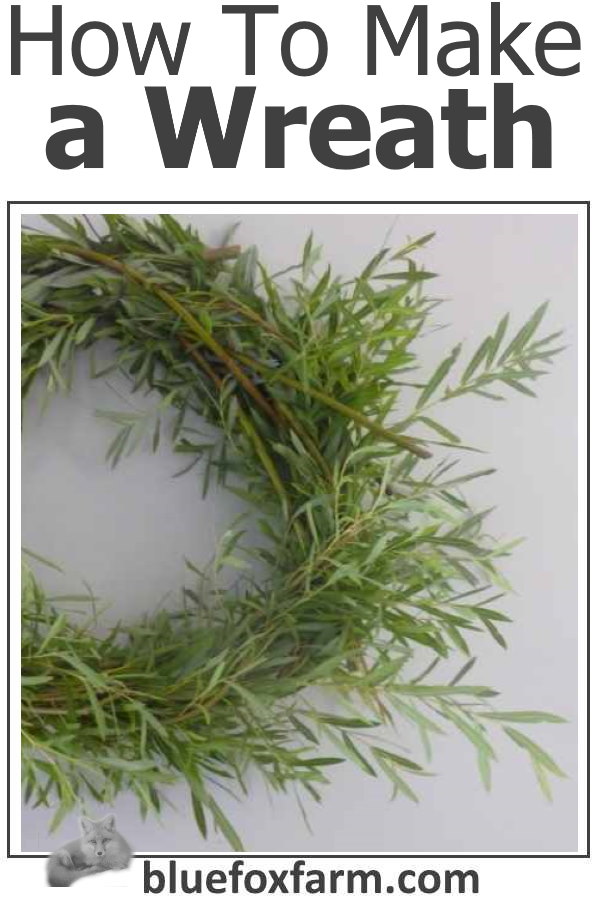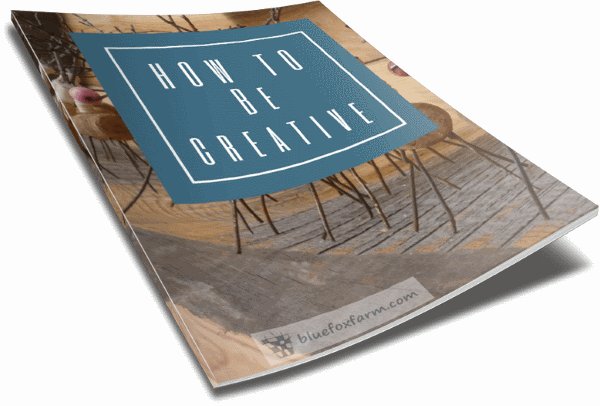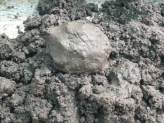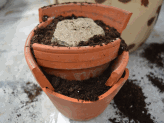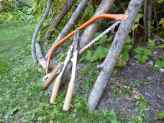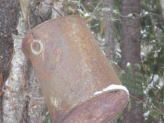How to Make a Wreath
Step by Step Instructions for a Twig Wreath
The first few steps are simple; find your pruners or loppers, cut several long whippy willow rods, wind the rods together, store until dry...
Sounds easy, right? Not so fast. First, find the right kind of stems to cut. The best is willow because it's so flexible and pliable - spring is the best time to cut willow for bending, because it's really easy to bend then.
Later on in the summer, you may have to cut them and let them wilt for a few days - don't put them in water for this step.
Winter twigs won't have leaves, which may or may not be the look you're after. If you prefer it, strip the leaves off your spring and summer twigs.
Don't have willows in your garden? Then there are other ways to make equally effective twig wreaths using a coat hanger and wiring bunches of shorter twigs onto them.
This tutorial is all about the willows, and how to wind them to form a circle.
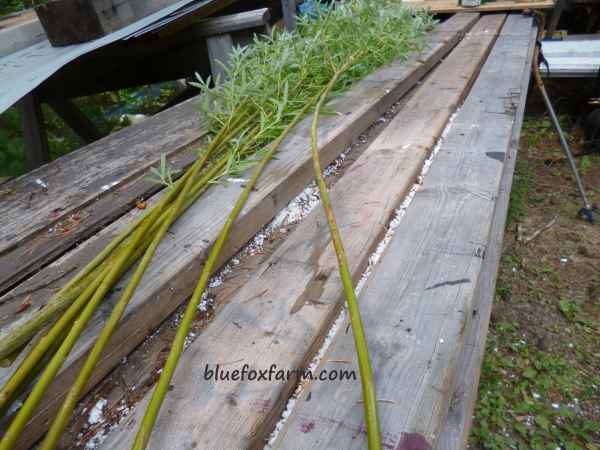
I cut several very long willow stems or rods.
My favorite variety is Salix koryanagi 'Rubykins', a special variety developed in Japan for basket making, but many willows produce the long whippy growth you need if they're regularly pruned hard, or coppiced.
The following pictures show how to start your wreath.
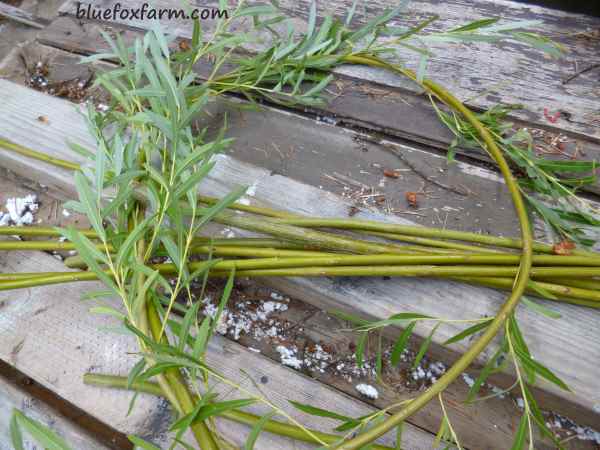
First, make a rough circle out of the longest whippy rod or stem.
The friction will hold the ends together, but you can use a clothespin to hold them if they insist on popping apart. Sometimes you have to 'pre-bend' the large end by rubbing it over your knee to soften the fibres.
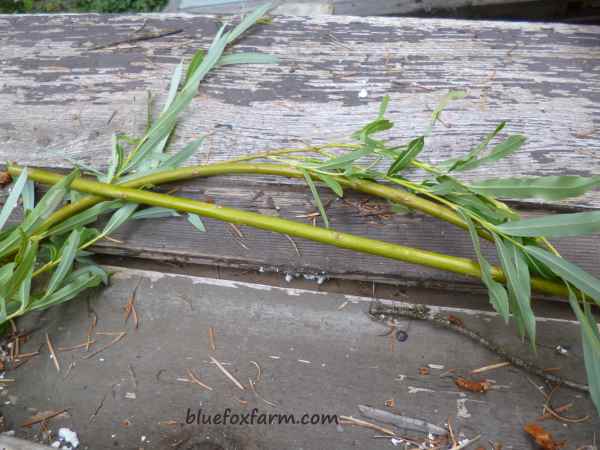
Where the skinny end of the rod ends, insert the larger end of a new rod so it's going in the same direction.
You can change the direction so the pieces cross over each other, but that is more of an advanced technique as you get better at making wreaths.
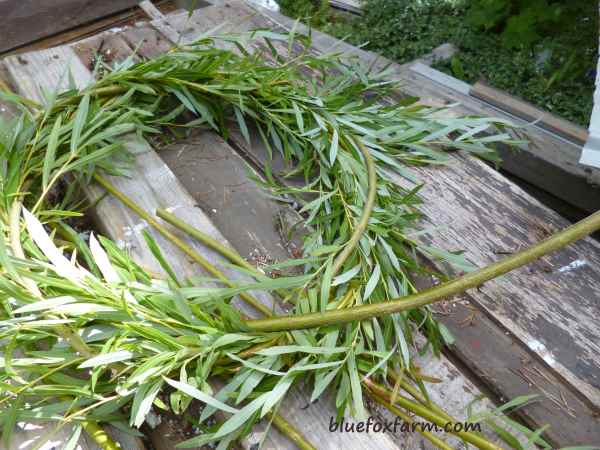
Sometimes the larger ends pop out; either firmly insert them into the already wound stems, or cut them off at the end of the process.
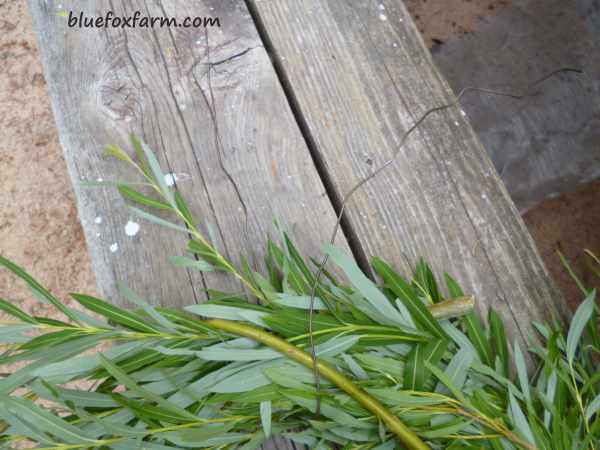
So you can hang it up, you'll want to make a quick and simple wreath hanger.
A piece of wire (copper wire is used here) is placed under the top of the wreath (you can choose this arbitrarily, because if you've done it right, the thickness will be uniform).
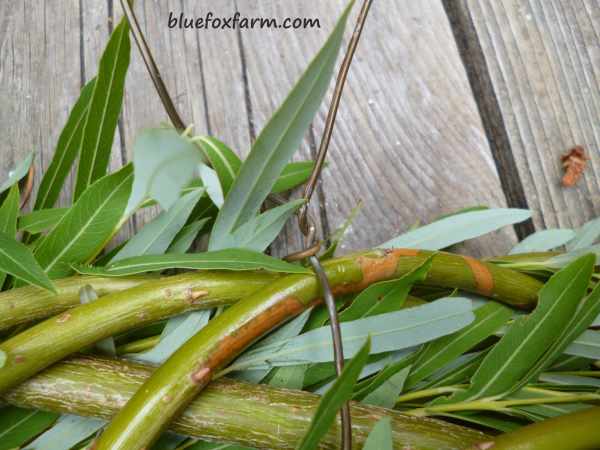
Close to the wreath, twist the two ends of the wire together.
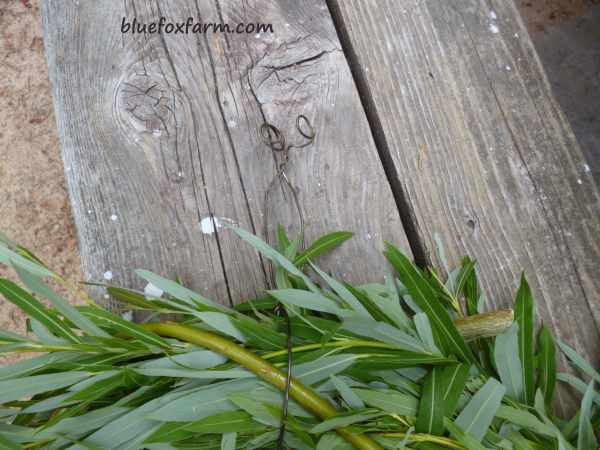
Leave a gap, then twist the two ends of the wire together, using a pair of needle nosed pliers, then make pigtails on the ends of each one to prevent them from snagging. Done!
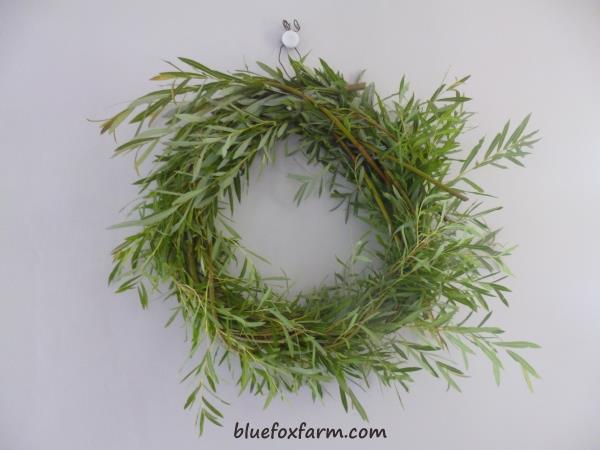
Hang your finished wreath indoors to dry. I like to have mine inside my tiny house, both for decoration, and for the lovely sweet smell of the drying willow. As the stems dry, they'll change color and turn a much softer brownish green.
Learn what it takes to be creative - we all have the gene but how do we develop it? Get the free guide!
Fill in the form below for your copy;
(Don't be disappointed - use an email address that will accept the free download - some .aol email addresses won't.
If you don't see your download within a few minutes, try again with another email address - sorry for the bother.)
